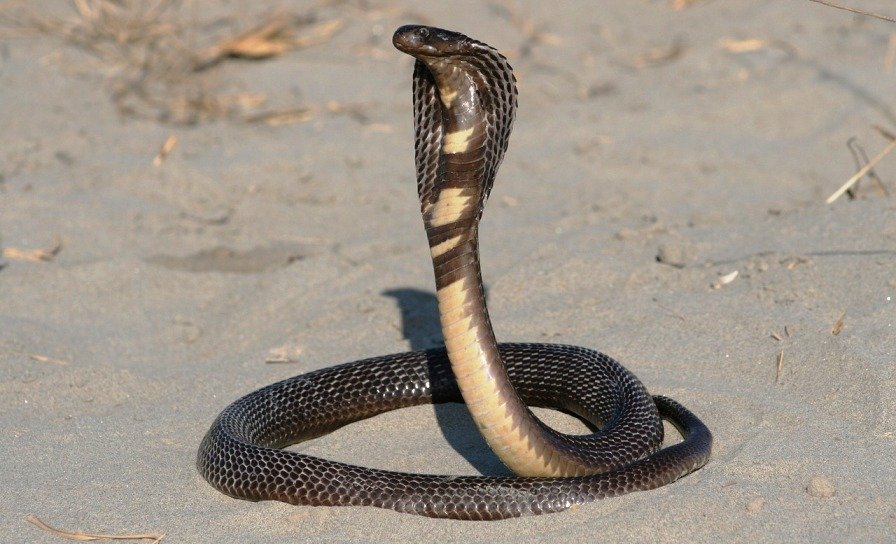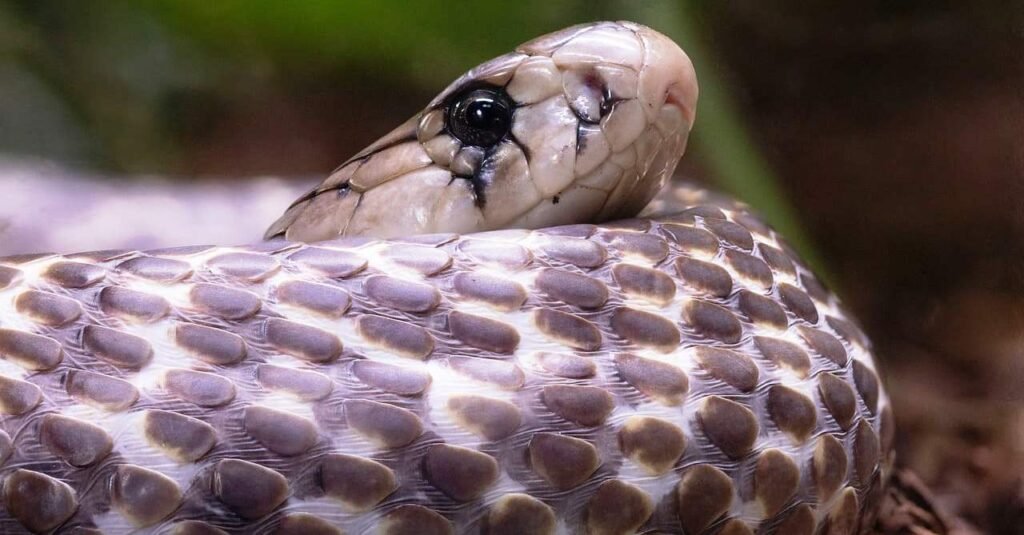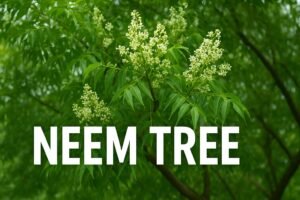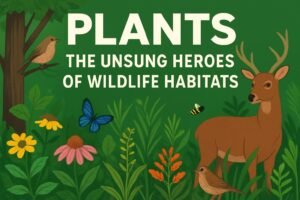Cobra Snake All Information
Deadly Venomous
Introduction to Cobras
Cobras are among the most fascinating and feared creatures in the world. These snakes are easily recognizable by their hood, which they flare out when they feel threatened. This behavior, coupled with their venomous bite, has made them both a symbol of danger and a subject of admiration in many cultures. Cobras belong to the family Elapidae and play a vital role in maintaining the balance of their ecosystems by controlling the population of pests and other small animals.
At Wildlife Nest, we delve into the world of cobras, exploring their characteristics, behaviors, and importance in the natural world. Our aim is to provide accurate and engaging information that helps you appreciate these incredible reptiles even more.

Snake Classification
Cobras are part of the Elapidae family, which also includes other venomous snakes like mambas and coral snakes. Within this family, the most well-known genus is Naja, which includes several species of cobras found across Africa and Asia. Another genus of note is Ophiophagus, which includes the King Cobra, the world’s longest venomous snake.
Scientific Names
Understanding the scientific names of cobras can help in identifying and differentiating them. Here are a few notable species:
| Common Name | Scientific Name |
|---|---|
| Indian Cobra | Naja naja |
| King Cobra | Ophiophagus hannah |
| Egyptian Cobra | Naja haje |
| Monocled Cobra | Naja kaouthia |
| Forest Cobra | Naja melanoleuca |
Cobra Snake Names Around the World
Cobras are known by various names across different regions in India, reflecting the diversity of languages and cultures:
| Common Name & Scientific Name | Regional Names |
|---|---|
| Indian Cobra (Naja naja) | India: Hindi – Nag, Nagini; Kannada – Naaga; Telugu – Nagpamu |
| King Cobra (Ophiophagus hannah) | Southeast Asia: Thai – Nga Phaa; Indonesian – Ular Raja; Malay – Ular Raja |
| Egyptian Cobra (Naja haje) | Africa: Arabic – Aḥmar (الأحمر); Swahili – Cobra |
| Monocled Cobra (Naja kaouthia) | Southeast Asia: Thai – Naga Monocle; Burmese – Kyan Sin; Lao – Naga Phai |
| Forest Cobra (Naja melanoleuca) | Central Africa: French – Cobra des Forêts; Swahili – Cobra wa Msitu |
Physical Characteristics
Cobras have several unique physical traits:
- Body Structure: Cobras have long, slender bodies covered with smooth scales. Their most distinguishing feature is the hood, which is created by the extension of the ribs behind their heads.
- Fangs: Cobras are equipped with fixed, hollow fangs through which they inject venom into their prey or predators.
- Size Variations: Cobras vary in size, with the King Cobra growing up to 18 feet long, while smaller species like the Indian Cobra typically range from 5 to 6 feet.

Habitat and Distribution
Cobras are incredibly versatile and thrive in a range of environments.
- Types of Habitats: They inhabit rainforests, deserts, grasslands, and even urban areas. Cobras are versatile and can thrive in both terrestrial and aquatic environments.
- Geographical Distribution: Cobras are mainly found in Africa, Asia, and India. The Indian Cobra, for example, is widespread across the Indian subcontinent, while the King Cobra is predominantly found in the forests of Southeast Asia.
Appearance Around the World
Cobras exhibit variations in appearance depending on their geographical location:
- Color Patterns: Indian Cobras typically have a spectacled pattern on their hood, while the Monocled Cobra has a single ring or “monocle.” African species like the Forest Cobra have darker, banded appearances.
- Size: Cobras in different regions may vary in size, with some African species growing larger than their Asian counterparts.
Diet and Feeding Habits
Cobras are carnivorous and have a diverse diet:
- Types of Prey: They primarily feed on rodents, birds, frogs, and other small mammals. The King Cobra is known for its unique diet of other snakes, including venomous ones.
- Hunting Techniques: Cobras use their keen sense of smell and sight to locate prey. They strike quickly, delivering a lethal dose of venom before swallowing their prey whole.
Venom and Its Types
Cobras are fascinating for their potent venom, which varies across species. Here’s a look at the types of venom and their effects:
Neurotoxic Venom
Description: Neurotoxic venom affects the nervous system by blocking nerve signals, which can lead to paralysis and respiratory failure. This type of venom acts quickly, making it highly effective for subduing prey.
Examples:
- Indian Cobra (Naja naja): This cobra’s neurotoxic venom disrupts the nervous system, leading to paralysis and potentially respiratory failure.
- King Cobra (Ophiophagus hannah): Its venom contains strong neurotoxins that impact the nervous system, causing severe effects on its prey.
- Monocled Cobra (Naja kaouthia): Known for its neurotoxic venom that causes paralysis and disrupts nerve function.
- Forest Cobra (Naja melanoleuca): Features neurotoxic venom that can cause paralysis and respiratory issues.
- Egyptian Cobra (Naja haje): This species also possesses neurotoxic venom, which impacts the nervous system and can lead to paralysis.

Behavior and Lifestyle
Cobras exhibit a variety of behaviors:
- Common Behaviors: Cobras are known for their ability to raise the front part of their bodies and spread their hoods as a defensive posture. They can slither quickly, climb trees, and some species can even spit venom accurately over several feet.
- Activity Patterns: Most cobras are diurnal, meaning they are active during the day. However, some species may be nocturnal or crepuscular, being most active during dawn and dusk.
Reproduction and Life Cycle
Cobras have intriguing reproductive habits:
Mating Habits: During the breeding season, which typically occurs from March to June, male cobras engage in dramatic combat dances to capture the attention of females. This ritual helps them establish dominance and attract a mate.
Eggs vs. Live Birth: Cobras are oviparous, meaning they lay eggs. The female typically lays between 10 to 30 eggs and guards them until they hatch.
Hatchlings: When the eggs hatch, the young cobras emerge fully formed and independent. They are equipped with venom and can hunt and defend themselves right from birth. The hatchlings are miniature versions of adult cobras and have to fend for themselves in the wild.
Growth and Development: As they grow, young cobras will molt several times. Each molt allows them to grow larger and shed their old skin. The growth rate varies among species, but cobras generally reach maturity within a few years.
Life Span of Cobra Snakes
Cobra snakes, with their striking appearance and potent venom, have varying life spans depending on their species and environmental conditions. Here’s a look at the typical life span of cobras:
Average Life Span
- In the Wild: Cobras generally live between 10 to 20 years in their natural habitats. The exact duration can vary based on factors like predation, food availability, and environmental conditions.
- In Captivity: When kept in captivity, such as in zoos or as pets, cobras can live longer—up to 20 to 25 years. The controlled environment, regular feeding, and lack of natural predators contribute to their extended life span.
Factors Affecting Life Span
- Species: Different species of cobras have different life spans. For instance:
- Indian Cobra (Naja naja): Typically lives around 15 to 20 years.
- King Cobra (Ophiophagus hannah): Can live up to 20 years or more in captivity.
- Egyptian Cobra (Naja haje): Generally lives about 10 to 15 years in the wild.
- Habitat: The environment where a cobra lives can impact its life span. Factors such as climate, availability of prey, and presence of predators play a significant role.
- Human Interaction: In captivity, cobras are protected from many threats they face in the wild, such as diseases and predators. This protection often leads to a longer life span.
Conservation Status
The survival of cobras is under threat due to various factors:
- Threats: Habitat loss, poaching for their skin and venom, and the illegal pet trade are significant threats to cobra populations.
- Conservation Efforts: Efforts to protect cobras include habitat preservation, anti-poaching measures, and education programs to reduce human-snake conflict.
Human-Snake Interactions
Cobras have a long history of interaction with humans:
- Myths and Misconceptions: Cobras are often misunderstood. In many cultures, they are revered as symbols of power and protection, while in others, they are feared. Education is key to dispelling myths and promoting coexistence.
- First Aid for Snake Bites: If bitten by a cobra, it’s crucial to seek immediate medical attention. Avoid traditional remedies and focus on getting to a healthcare facility where antivenom can be administered.
- Safe Encounters: If you encounter a cobra in the wild, remain calm, slowly back away, and avoid sudden movements. Cobras are generally not aggressive and will only attack if they feel cornered or threatened.

Fun Facts
Cobras are full of surprises:
- Unique Adaptations: The King Cobra is the only snake that builds a nest for its eggs. Cobras can “spit” their venom to blind predators from a distance.
- Record-Breaking Snakes: The King Cobra holds the title of the longest venomous snake in the world, with some individuals reaching over 18 feet in length.
Educational Resources
To learn more about cobras, consider exploring these resources:
- Books: “The Cobra in the Basket” by Venna Sudhakar
- Documentaries: “The King Cobra and I” (National Geographic)
- Websites: Wildlife Nest, National Geographic – Snakes
Cobras are more than just symbols of danger; they are vital members of our planet’s biodiversity. By understanding and respecting these incredible creatures, we can help ensure their survival for generations to come.
FAQ: All About Cobras
What is a cobra?
Cobras are a group of venomous snakes known for their distinctive hood, which they expand when threatened. They belong to the family Elapidae and are found primarily in Africa and Asia.
What are some notable species of cobras?
Here are a few notable species:
- Indian Cobra (Naja naja)
- King Cobra (Ophiophagus hannah)
- Egyptian Cobra (Naja haje)
- Monocled Cobra (Naja kaouthia)
- Forest Cobra (Naja melanoleuca)
What are the different regional names for cobras?
Cobras are known by various names depending on the region:
- Indian Cobra: “Nag” (Hindi), “Naaga” (Kannada), “Nagpamu” (Telugu)
- King Cobra: “Nga Phaa” (Thai), “Ular Raja” (Indonesian)
- Egyptian Cobra: “Aḥmar” (Arabic), “Cobra” (Swahili)
- Monocled Cobra: “Naga Monocle” (Thai), “Kyan Sin” (Burmese)
- Forest Cobra: “Cobra des Forêts” (French), “Cobra wa Msitu” (Swahili)
How do cobras reproduce?
Cobras are oviparous, laying eggs rather than giving live birth. During the breeding season (March to June), male cobras perform combat dances to attract females. The female lays 10 to 30 eggs and guards them until they hatch.
What is the life span of cobras?
In the wild, cobras typically live between 10 to 20 years. In captivity, they can live up to 20 to 25 years due to controlled environments and lack of natural predators.
What are cobras’ main predators?
Cobras face threats from various predators, including birds of prey, larger snakes, and mammals like mongooses. In some areas, humans also pose a significant threat through habitat destruction and poaching.
How should I respond if bitten by a cobra?
If bitten by a cobra, seek immediate medical attention. Do not attempt traditional remedies; instead, get to a healthcare facility as quickly as possible where antivenom can be administered.
Are cobras aggressive towards humans?
Cobras generally prefer to avoid humans and will only attack if they feel threatened or cornered. If you encounter a cobra, stay calm, move slowly away, and avoid sudden movements.
What unique adaptations do cobras have?
Cobras have several fascinating adaptations, such as the ability to “spit” venom to deter predators and the King Cobra’s nest-building behavior. They also use their hood as a defensive display to appear larger and more intimidating.
Feel free to explore more about these incredible reptiles at Wildlife Nest and deepen your understanding of their role in nature.
Related Information That You Like
| Title | Key Content & Focus |
|---|---|
| The Ultimate Guide to Snakes | Comprehensive overview of snake species, their habitats, behavior, and ecological importance. Detailed insights into various snakes and their roles in the ecosystem. |
| What Are Reptiles? | Introduction to reptiles, covering characteristics, types, and evolutionary significance. Explains key reptilian features such as cold-bloodedness and scales. |
| The Deadliest Venom | Exploration of the most potent venoms in the animal kingdom, including those of snakes. Discusses the effects of venom on prey and humans, with a focus on highly venomous species like the Big Four. |
| Most Dangerous Snakes in the World | Highlights some of the world’s most dangerous snakes, emphasizing those with the deadliest bites. Identifies and describes snakes known for their lethal venom and aggressive behavior. |
| Wildlife Sanctuaries in India | Guide to India’s wildlife sanctuaries, focusing on biodiversity and conservation efforts. Highlights important sanctuaries and the unique wildlife they protect. |
| Gir National Park Guide | Detailed guide to Gir National Park, the habitat of the Asiatic lion. Covers the park’s history, wildlife, safari options, and tips for visitors. |
| Explore Tadoba | In-depth look at Tadoba Andhari Tiger Reserve, its wildlife, and visitor information. Includes the history, wildlife, and practical tips for exploring one of India’s top tiger reserves. |



